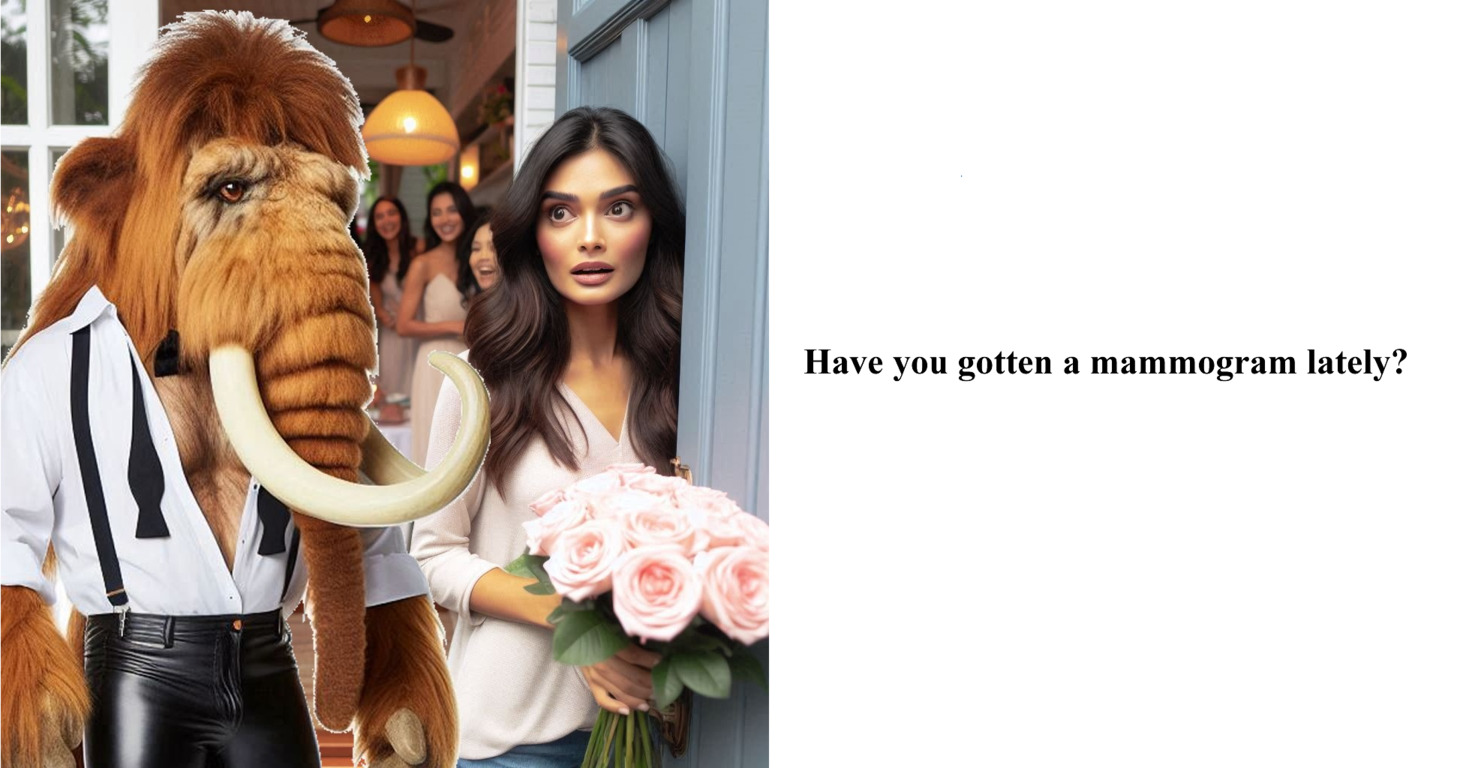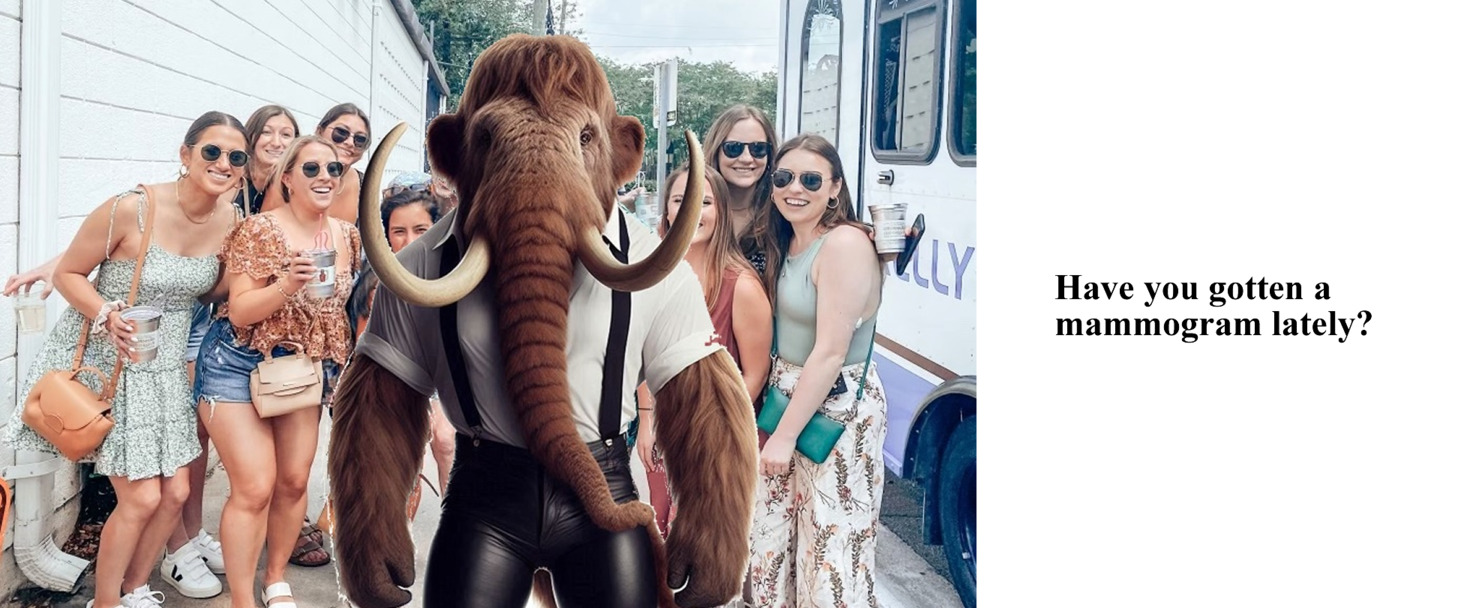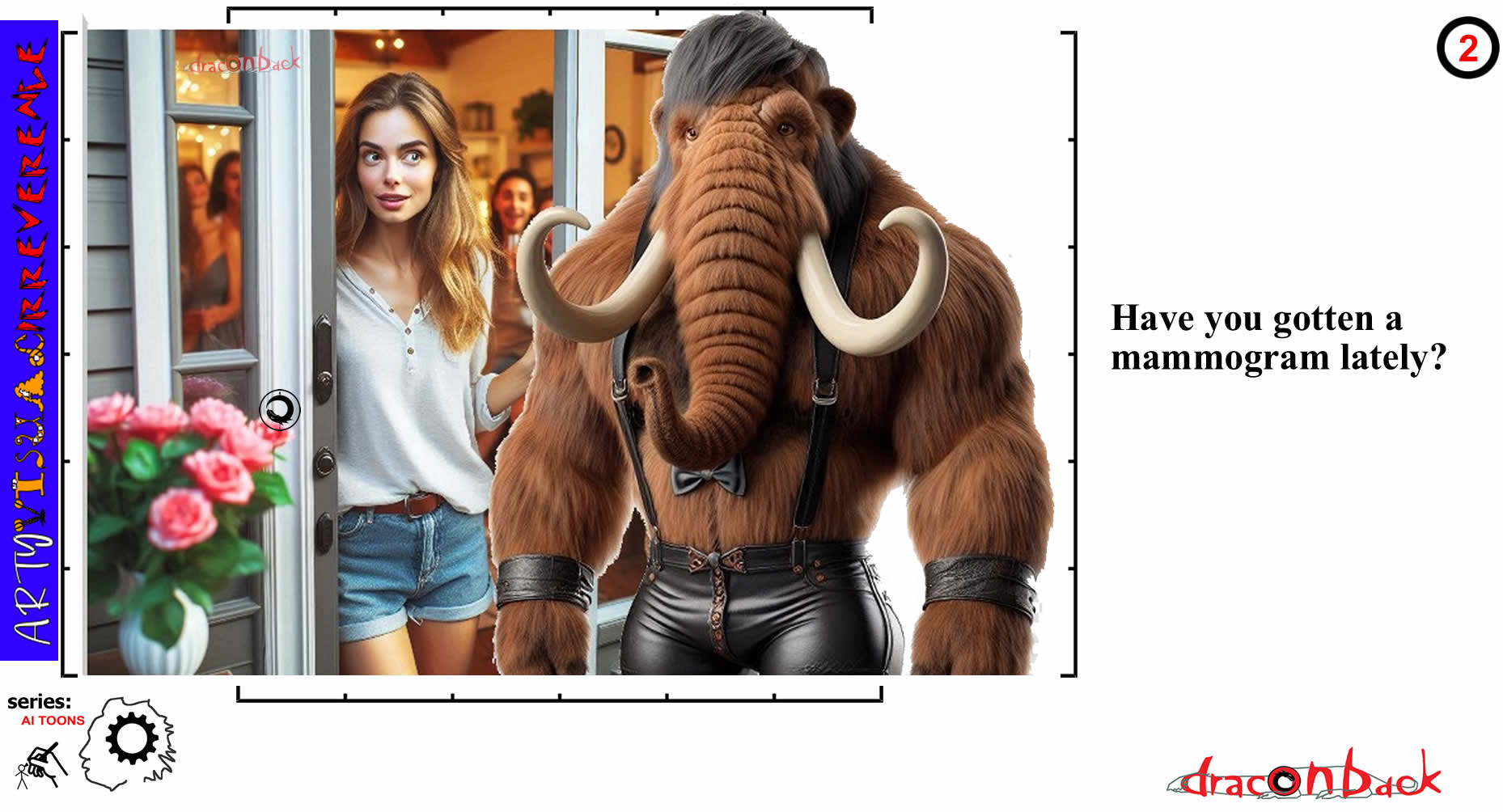|
|
In explanation, several months previous to this writing my lover underwent a mammogram which revealed a small tumor which proved to be cancerous. With the early detection afforded by the mammogram the nodule was successfully removed and was followed up with a very short course of radiotherapy and a very encouraging prognosis. When she initially told me about the exam I did have some basic knowledge of the procedure—but the term “mammogram” conjured up an image of a strip-o-gram delivered by a wooly mammoth. Copilot and Night Café were both rather prudish about producing any images involving text prompts about elephantine species dressed as male strippers so I had to ask for images of the extinct beasts in “Chippendale dancer costumes”. Anyway, I finally got some appropriate images and I hope they might serve to encourage women to have regular examinations for breast cancer.
Breast cancer is no trivial matter… but that being said here is some trivia related to mammograms, mammoths and the Chippendales:
about mammograms:
- The first X-ray mammography unit was developed in 1966 by a physicist named Robert Egan, revolutionizing early breast cancer detection.
- Mammograms can detect tumors up to two years before a physical exam can feel them, potentially catching cancer at its most treatable stage.
- Digital mammography, which uses computer-aided detection, has been the standard since 2000 and provides clearer images compared to traditional film mammography.
- Screening recommendations vary by country and medical organization, but most suggest women begin routine mammograms between ages 40-50, with frequency depending on individual risk factors.
- Breast density, which shows up white on mammograms just like tumors, can make detecting cancer more challenging and may require additional imaging techniques.
- Mammograms use a low dose of radiation - roughly equivalent to the radiation exposure from a cross-country airplane flight, making them relatively safe for periodic screening.
trivia about mammoths:
- Woolly mammoths survived until around 4,000 years ago on Wrangel Island, off the coast of Siberia, making them contemporaneous with early human civilizations. So there was at least one relict population of mammoths, dwarved though they may have been, that were still around when the great pyramids of Giza were constructed around 4,600 years ago.)
- Mammoths had extremely long, curved tusks that could grow up to 16 feet in length and were used for defense, digging, and attracting mates.
- Their thick fur and layer of fat allowed mammoths to survive in extremely cold environments, with some species thriving during the last Ice Age.
- Genetic studies suggest mammoths were more closely related to modern-day Asian elephants than African elephants. (Recently, although the work did not involve the introduction of mammoth genes, gene editing technologies were used to create mice with long, thick wooly coats reminiscent of those of ice age mammals.)
- Adult mammoths weighed between 4-6 tons and stood about 10 feet tall at the shoulder, making them significantly larger than most modern elephant species.
- Preserved mammoth remains have been found with intact soft tissues and even stomach contents, providing scientists with unprecedented insights into their diet and environment.
trivia about the Chippendales:
- The Chippendales originated in 1979 when Somen "Steve" Banerjee and Paul Snider founded a male exotic dance troupe in Los Angeles, initially targeting women's entertainment.
- Their iconic costume of black bow tie, white cuffs, and black tear-away pants was designed to create a playful "male stripper" archetype that became globally recognizable.
- The troupe gained massive popularity in the 1980s, transforming from a local nightclub act to an international entertainment phenomenon through live shows and television appearances.
- Steve Banerjee was convicted of multiple crimes, including hiring a hitman to murder a former business partner, and ultimately died by suicide in 1994 while awaiting sentencing.
- The Chippendales pioneered the male revue concept, creating a blueprint for similar performance groups and significantly changing perceptions of male entertainment.
- Their brand expanded beyond live performances to include merchandise, calendars, and video productions, making them a major entertainment franchise during the 1980s and early 1990s.
and here are a couple of other versions of the a.i.toon above:


|







